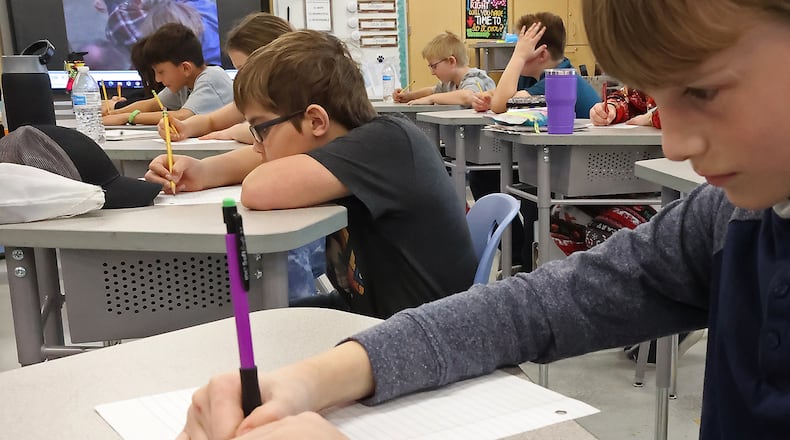Students in grades 3-8 will take English and math assessments, grades 5 and 8 will take science assessments and high schoolers must take assessments in math, science, English, American history and American government to graduate. Student test scores are part of an assessment of local school districts the state conducts.
Ohio State research
A study from Ohio State University published last August looked at the results of state-mandated testing done in spring 2021. The study found Ohio students who attended virtual school in the 2020 school year missed the equivalent of a half to a full year in math and between one-third and one-half of a year in language arts, depending on the grade level.
The study specifically found third-grade students learned about 20% less on average between November 2020 and April 2021, which was between the fall and spring administration of the ELA exam, as compared to students in previous years.
The learning declines were greater for lower-achieving, economically disadvantaged and minority student subgroups and among districts that spent most of the year in fully remote instructions.
Vladimir Kogan, an Ohio State political science professor and co-author of the study, said the amount of help students can get from their parents, especially in reading, outside of school would change based on parents’ time and capacity to help.
“We think in reading, probably parents are able to supplement or substitute for what students aren’t getting at school and so you’re gonna get some inequalities,” he said.
Local schools’ approaches
Given the results from last school year’s testing, some districts are concerned about what the assessments will show this year. Area districts implemented additional help for students who were behind, whether that be adding teachers or working with students one-on-one.
Darrin Knapke, superintendent of Greenon Local Schools, said any type of data to gauge a student’s progress is beneficial, particularly since some students fell behind because of the pandemic.
“Our teachers do a great job of measuring their students’ performance based on the data we collect all year on our students,” he said. “The teachers give assessments and state approved diagnostic tests, which drive their instruction to meet each child’s educational needs.”
“We are focused on making at least a year’s worth of growth for each child. We are working hard to bridge the learning gap through the help of additional staff members with in school tutoring, after school tutoring and summer enrichment. I am very pleased with the progress our students are making this year and the academic excellence our teachers are providing to our students,” Knapke added.
In the Tecumseh Local School District, Superintendent Paula Crew said their testing will start the week after students return from spring break on April 4.
“We opted not to begin testing at the beginning of the testing window to maximize the amount of instructional time students may have prior to the test and to ensure students have adjusted from the time change,” she said. “We are optimistic about the progress we will see on the state testing from our students since we have had full-time, in-person instruction this school year.”
Aaron Churchill, an Ohio analyst at the Fordham Institute, an education think tank in favor of testing, said it’s important for the public to have a metric by which to compare school districts.
“It’s really important for the state, and nation as a whole, just in terms of building the talent and a knowledge base to compete, whether that’s statewide against other states or as a nation to be competitive globally,” Churchill said. “We need to have kids that can read, write and do math.”
The Ohio Education Association, the largest teachers’ union in Ohio, doesn’t support the current system of standardized testing. Instead, OEA said educators should be able to conduct ongoing assessments in multiple formats.
“Teachers are understandably frustrated with instructional time lost to state tests, especially given how hard they are working to address the needs of students whose learning has been disrupted through the last two years of the pandemic,” said OEA president Scott DiMauro.


